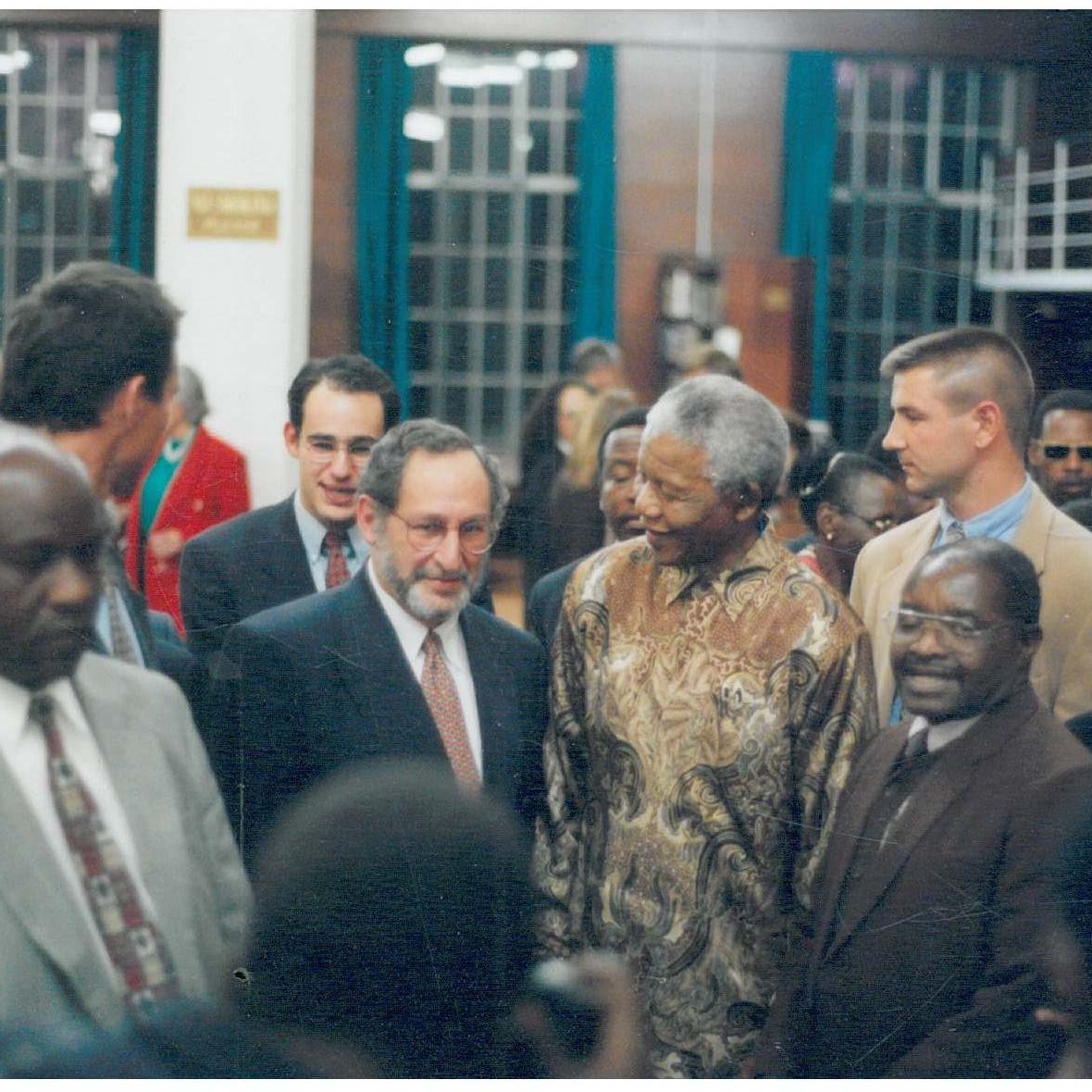click to dowload our latest edition
CLICK HERE TO SUBSCRIBE TO OUR NEWSLETTER


Published
4 years agoon
By
adminBENJAMIN POGRUND
No words, big or small, can adequately convey the immensity of his life. Think of a man brought up in a system where the colour of his skin doomed him to inferiority and insult; who was persecuted for striving for human rights, and while serving the punishment of life imprisonment, suffered cruelly from his white jailors.
Yet, after 27 years, this man emerges, not weakened, but strengthened, with forgiveness in his heart and a glittering belief in a colour-free land.
Much is written about this singular man. On the 102nd anniversary of his birth, let me offer a few personal memories which go back to 1957, when I first met him after moving from Cape Town to Johannesburg. He was head of the then Transvaal province of the African National Congress (ANC). But not in the government’s eyes, because he was banned from membership of the ANC, and not allowed to speak or write in public. The ANC’s policy was, “We stand by our leaders”, so he was a leader behind the scenes.
I went to speak to him at the sparse lawyers’ offices he shared with his partner, Oliver Tambo, on the first floor of Chancellor House at the bottom end of Fox Street. Our meetings were short because he was an accused in the Treason Trial, which ran from 1956 to 1960, and he spent many weary days attending court in Pretoria, with little time left for his attorney’s practice.
The next year, I was on the Rand Daily Mail (RDM), and reported on Mandela as a lawyer in the Magistrate’s Court building across the street from his office. White magistrates visibly struggled to maintain basic civility – some couldn’t hide their hostility – as they confronted the shocking – to them – unusualness of a black lawyer, especially one who was self-confident and imposing. They didn’t know how to deal with his courtesy.
In 1961, he went underground to organise a country-wide “stay at home”, so called because strikes by black people were illegal. While the police hunted him, we met regularly – usually sitting in my car at night in a dark street on the edge of the city centre – as he briefed me about his plans, enabling the RDM to keep the public informed.
The strike was only partially successful. Government and business intimidation forced black people back to their jobs. The RDM contributed to the failure with inaccurate coverage. That morning, I sat in my office, filled with misery about what my newspaper had done. The phone rang: it was Mandela, warm and cheery as always, to say he knew it hadn’t been my fault. After months of dangerous work, only to see his hopes and plans dashed, his call was an act of astonishing generosity, and I have never ceased to marvel at it.
That night, he phoned again to tell me that the ANC despaired of non-violent opposition to apartheid. Armed resistance was to come.
What followed is well known. Later in the year, he escaped from the country, returned, was betrayed and arrested, and tried for seeking to overthrow the government. The death sentence loomed because of the atmosphere created in the court by the prosecutor, Percy Yutar. Only international pressure saved Mandela’s life.
What’s usually overlooked now is that for long afterward, he was a forgotten man in the world. The year after his highly reported trial, the New York Times carried only one article with the name “Mandela”, about his wife, Winnie. He was a distant hero to black South Africans, but any time the government and most whites thought of him, he was a dangerous terrorist who should have been hanged. To be known as a friend of his (and also of Robert Sobukwe, held in solitary confinement on Robben Island) made me a pariah to many white people.
I gradually learned from prisoners released from the island that Mandela was emerging as the undisputed leader, not only of the ANC but acknowledged to be so by many hundreds from rival anti-apartheid movements.
This was significant because previously, while certainly a leader, he had been seen as rather a playboy: good-looking, charming, married to the glamorous Winnie, living well (or as much as any black person could in the townships), well-dressed, a lawyer, and even owning a car, which few black people did.
Eventually, I saw the change in him for myself. At first, the prisons department barred me, so my contact with Mandela was sporadic and roundabout. But I kept asking to visit him, and finally, early in the 1980s, I was given permission to see him at Pollsmoor Prison in Cape Town. There was a condition: I could visit him as a friend, not as a journalist, and had to promise not to write anything. I was the RDM’s deputy editor, and had to tell my colleagues that I was going to be Mandela’s first non-family visitor in many years, and it had to be kept secret. They took it well.
The man I met, with a large glass panel between us, was the Mandela I remembered, grey-haired yes, but with the same friendliness, direct speaking, and clear mind. And he was a man of gravitas. I understood the stories about his rise to leadership.
He was also in charge. It was so obvious. The security warder in the room spoke to him with respect. Mandela’s body was in prison, but his mind was free.
